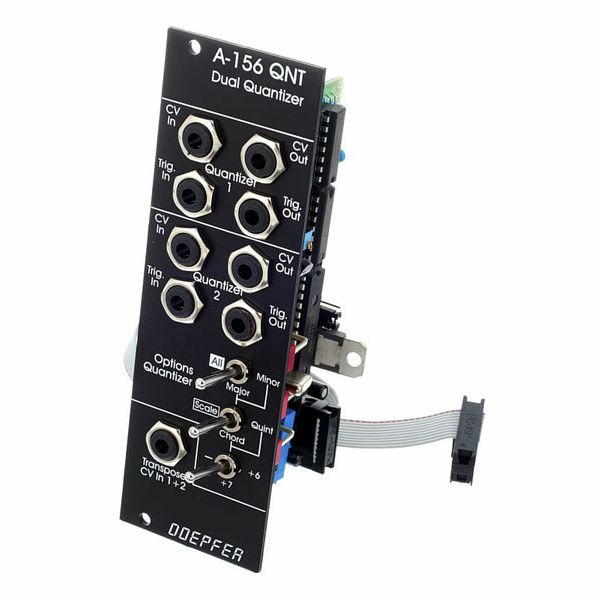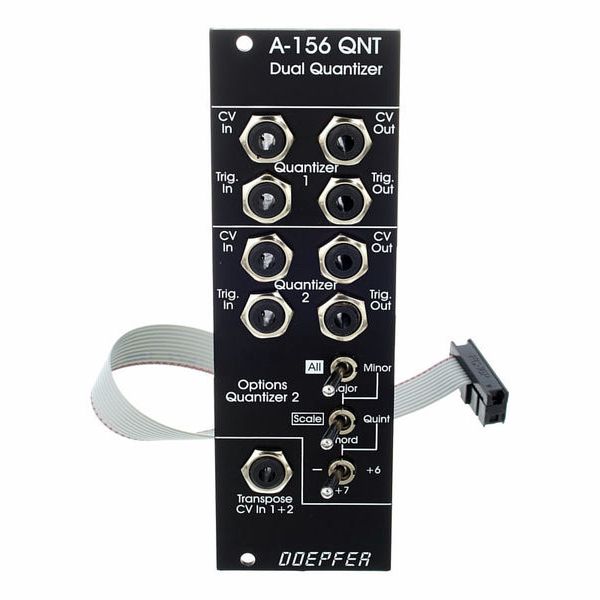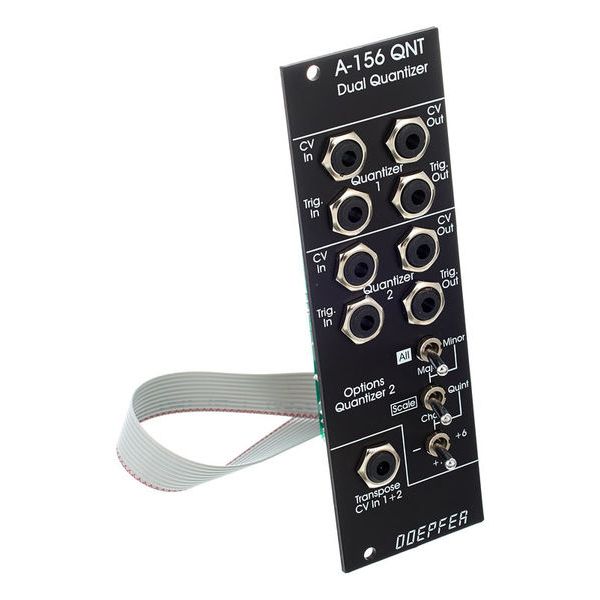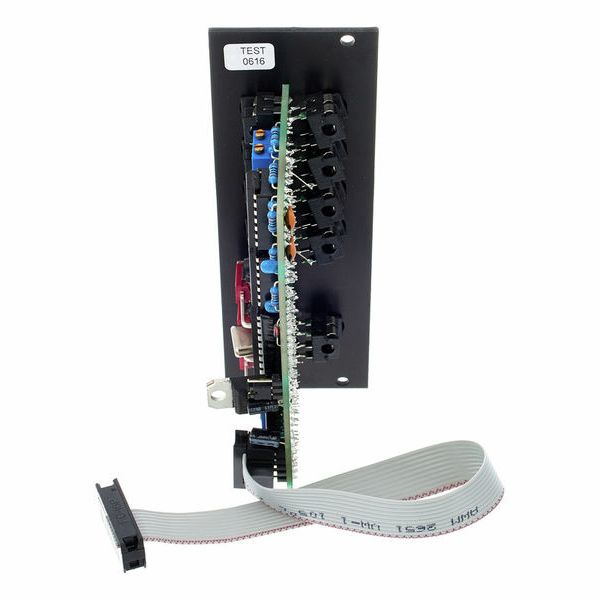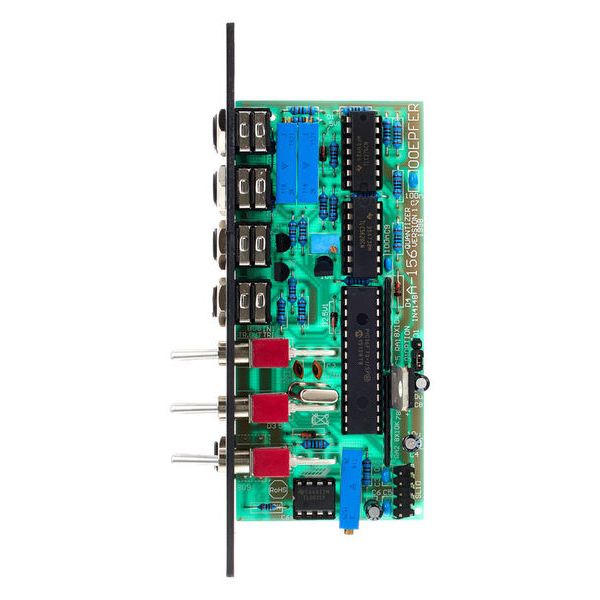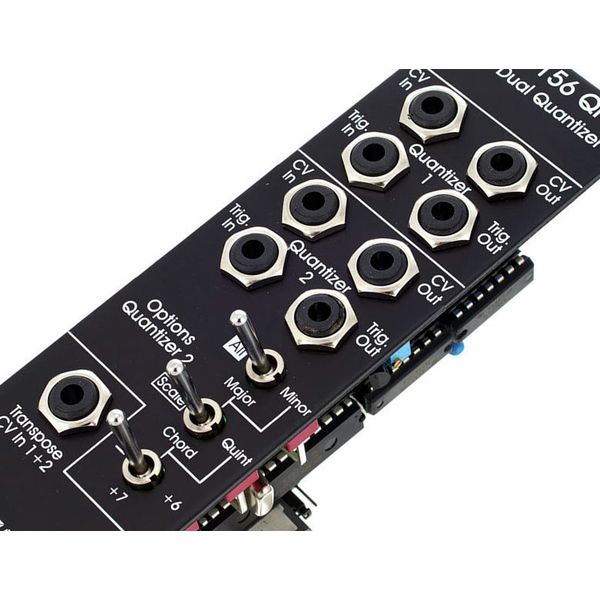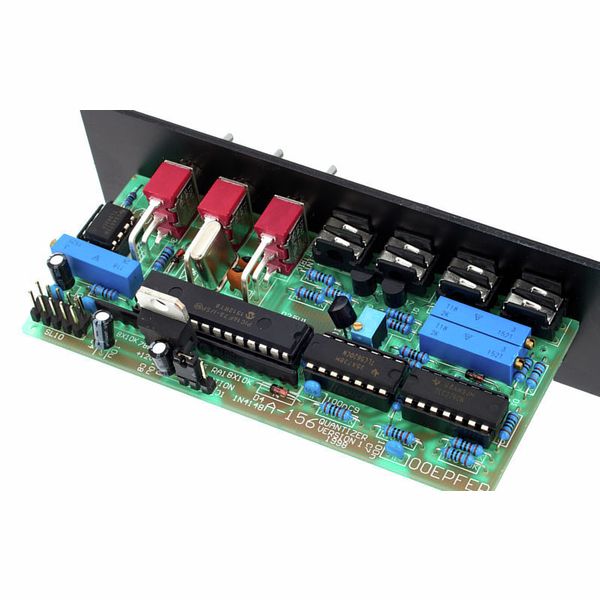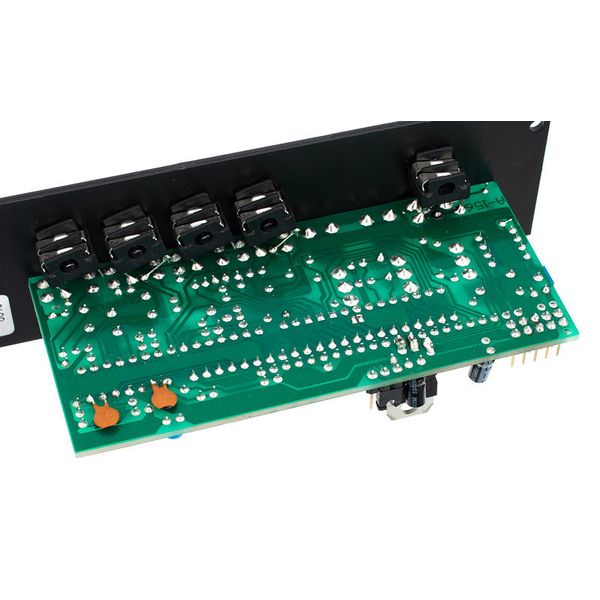I have the Doepfer A-149 module which generates stored and quantised random voltages. This is great, but soon I found myself looking for a module which would take the output of the A-149 and restrict it to play notes from recognisable scales, such as major and minor ones. I also wanted to create arpeggios which included only notes from certain chords. Research showed that I needed to get a control voltage quantiser, which would select from the random collages only those values that would play notes from chords or scales I had selected.
I bought the A-156 Dual Quantiser after I had checked out much more expensive versions from other manufacturers. The A-156 does not have all the 'bells and whistles' of its more expensive competitors, such as programmable scales and memories. however these devices are at least twice as expensive as the A-156, and I was not looking for extra functionality. A key feature of the A-156 is that it is a dual quantiser - in effect two devices in one. However, the second quantiser defaults to generating semi-tone scales only. This can be changed by changing the position of a jumper on the main circuit board. After that, both quantisers offer the same features, such as notes from a chosen scale or arpeggio playing a certain chord.
The A-156 also includes trigger outputs, which will send a gate signal each time a new note value is generated. This is very useful for 'shaping' the sound, such as triggering a low pass gate to open each time a note is created by the A-156 and played by a VCO.
Are there any shortcomings? Not really. For the price this module performs incredibly well, and it easy to operate. My one suggestion is that the jumper that links or separates the two quantisers, should be replaced by a 2-way switch on the module's front panel.
Great module, highly recommended.



